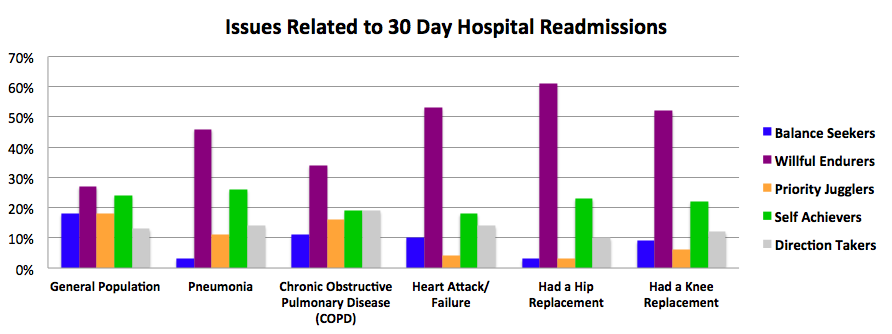Hospital readmissions are increasingly becoming a concern for health institutions, backed by research that 20 percent of unplanned readmissions are avoidable. Interventions against repeated hospital stays have gained traction to control the occurrence. For example, the US government set up the Hospital Readmissions Reduction Program (HRRP) to compel health institutions to take various actions to avoid preventable readmissions.
Preventing avoidable hospital readmissions lowers health costs and improves the health of patients suffering from chronic conditions. The unexpected recall of a patient back to the hospital often means they were not ready for a discharge.
Patient readmission means there is a likelihood of increased expenditures for treating the condition that deteriorated due to lack of close medical attention. HRRP seeks to influence better coordination between the patient and discharge protocols to prevent the premature release of inpatients. The critical causes of hospital readmissions are as below.
Premature Discharge
There are various reasons why a premature discharge from the hospital can happen. It could be that your health center is overcrowded or understaffed. Overcrowding means having more inpatients than the institution can handle and probably more waiting in line for admission. Because of the rush and pressure to admit more patients, overlooking some discharge protocols happen.
There is a probability of overstretched resources and people at the hospital, compelling staff to make hasty decisions about discharging patients. The constrained amenities should never be an excuse for prematurely releasing patients because it compromises their health situation. The health center also faces the risk of penalties for the negligence of the health of the patients.
Medication Errors Due to Lack of Patient Health Information
When you receive a first-time patient at your clinic, chances are high that they have been attended to by other physicians elsewhere for the same condition. Chronic patients usually have a particular treatment protocol they are following. Failure to obtain such information may result in medication errors with the patient.
The patient could be allergic to particular medicines, or there could be a possibility of misdiagnosis. The treatment outcome may manifest after several days of patient discharge. It is critical to obtain a comprehensive medical history of the patients to avoid such disastrous consequences.
The PHI holds the background health information of patients. You may wonder, what is PHI? The acronyms stand for Personal Health Information and contain all medical records of a patient since they started seeking medical attention.
Health Complications
Particular conditions are susceptible to readmissions soon after discharge from the hospital. Ailments with the highest readmission rates include septicemia, heart conditions, diabetes, sickle cell anemia, liver diseases, etc. The illnesses are prone to complications, and without thorough diagnosis & treatment protocol, the patients return for close medical attention.
To prevent readmissions due to health complications, your health institution should emphasize well-coordinated patient care for patients with high vulnerability to repeat inpatient visits. Emphasis should be on aspects like clinical and hygiene management to ensure the patients receive quality care.
Enhance coordination of medical staff handling patients and provide top-notch hygiene care. Sometimes patients get opportunistic infections from compromised sanitary conditions that complicate their ailments.
Patient Non-Compliance
Sometimes with the best care at the hospitals, readmissions still happen because patients do not comply with the guidelines of clinicians. Some patients go against the prescribed medication or diet or neglect aspects like exercising, rest, etc. The non-compliance reverts them to the state they were in from the previous hospital visit, if not worse.
Many factors can result in patient non-compliance, e.g., age, literacy, knowledge, beliefs, tobacco/alcohol intake, forgetfulness, etc. To guard against patients going against treatment guidelines, provide patient education at your health institution. In many cases, when the errant patient is aware of the adverse consequences of their action, they are likely to comply.
Identify patients likely to go against treatment protocol when at the hospital. Such patients are likely to project defiant behavior even before discharge. Delineate the patients and focus on them for the education sessions to prevent readmission.
Lack of Follow-up Care
Discharging patients and leaving them at their own devices can result in readmissions. Many people discard treatment protocols when they begin to feel better, not knowing that medicinal dosage needs completion to be effective. Sometimes, patients encounter challenges in following up on particular treatment protocols.
You can only identify the setbacks when you have a follow-up care mechanism after discharging patients. The current medical standards indicate a need for a timely follow-up within ten days after releasing an inpatient. On such calls, identify probable candidates for a revisit and preempt the occurrence by guiding them effectively.
Prevent Hospital Readmissions
Hospital readmissions are a concern in the medical sector, and you can play your part by arresting the occurrence at your health institution. Your health center will gain a positive public image if it is known for negligible or zero unexpected readmissions. Know the signs of exposure to avoidable inpatient revisits and look out for them at your institution.
